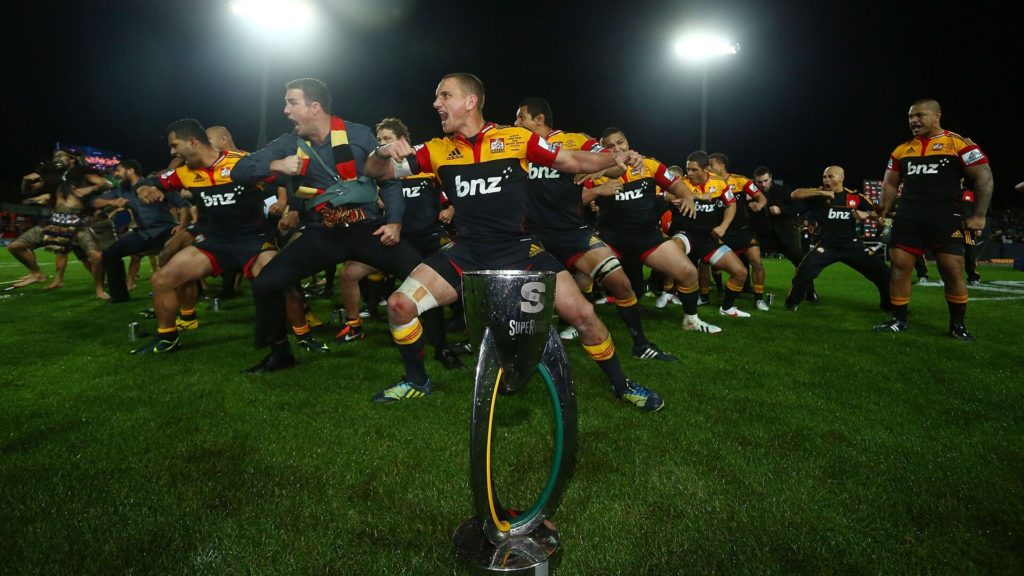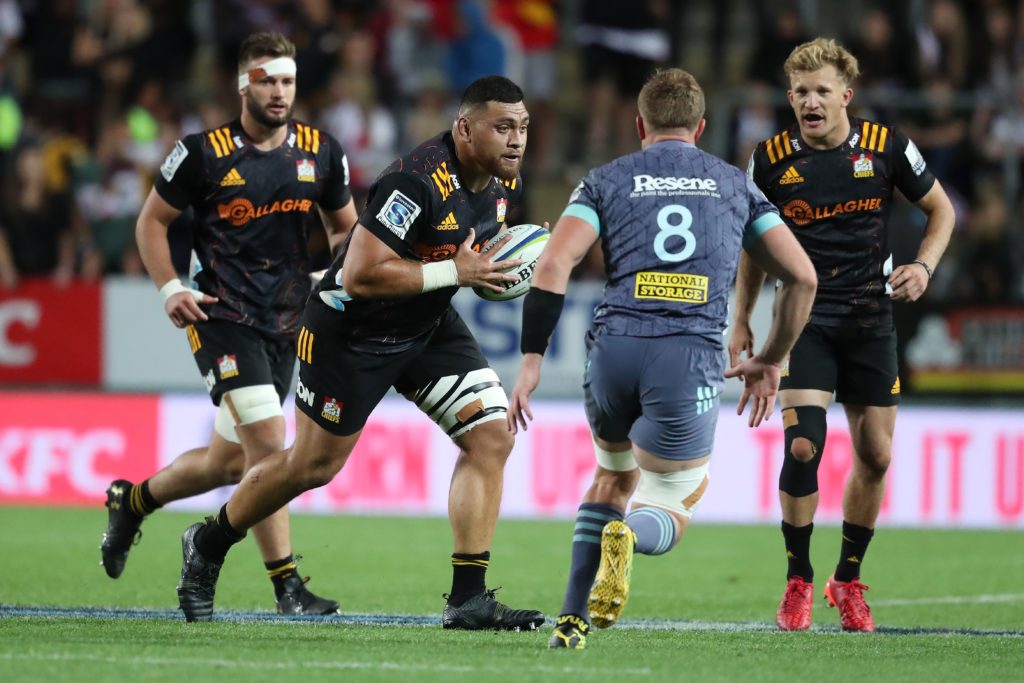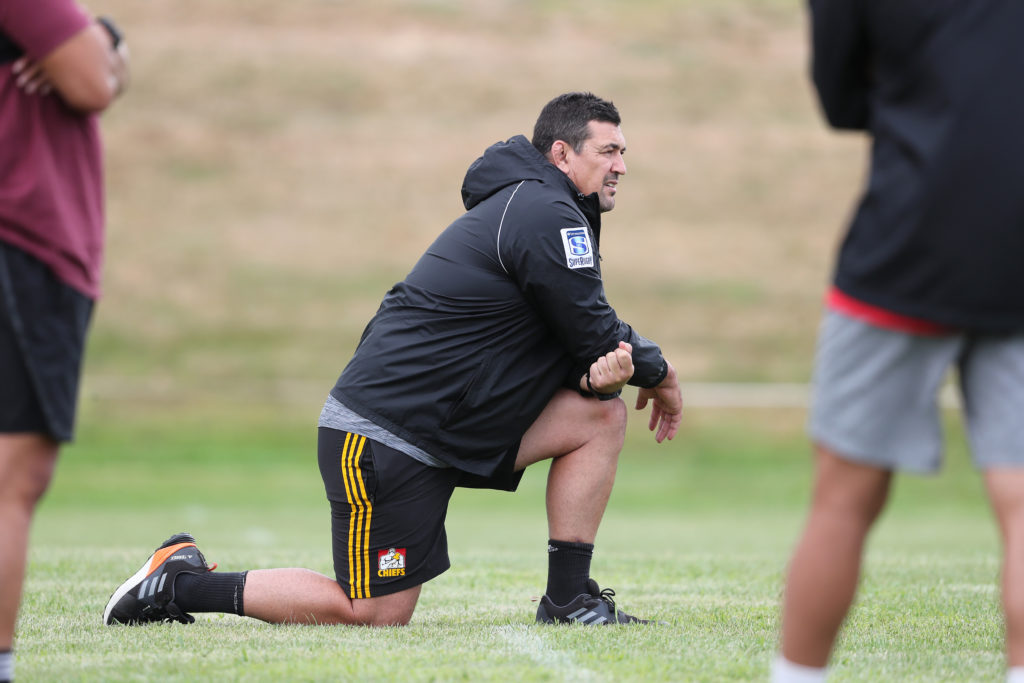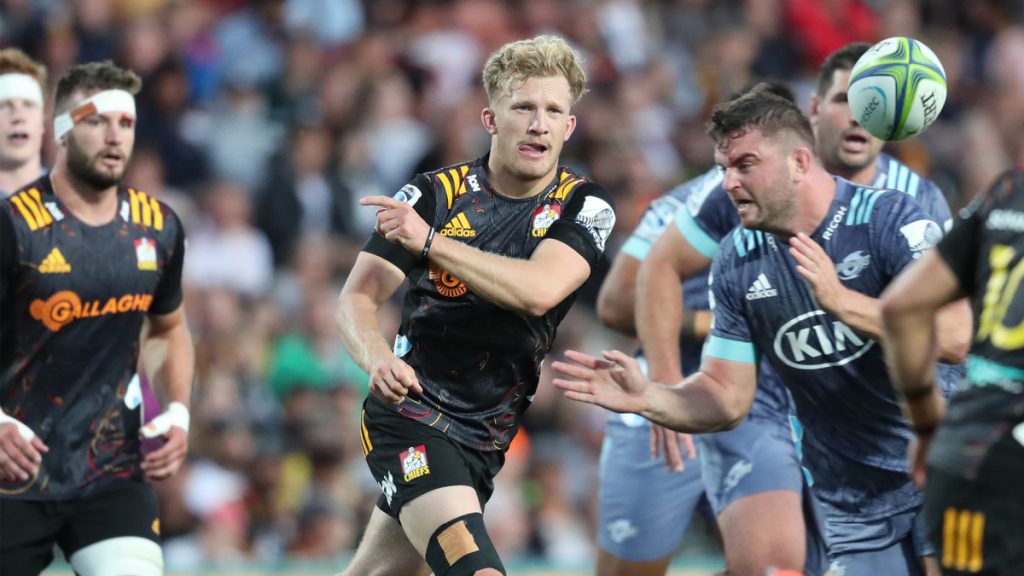For a team as talented and full of promise as the Chiefs, it is starting to feel like a long wait for more silverware. And it could still be a way off yet.
Laid bare since 2013, the trophy cabinet is gathering dust. Those back-to-back title runs in 2012 and 2013 feel like a long time ago now.
Those who were there to experience it are few and far between. There is new management, captaincy has consistently chopped and changed, players have come and gone, new coaches have put their signatures on the dotted lines.
It is nearly a decade now since this team won the title. They have come close since, making it to the play-offs every year. But they couldn’t win it and for all the promise and potential, there were too many reflections on what might have been.

In a competition dominated by small moments, last year’s testing 0-8 run in Super Rugby Aotearoa came as a shock to the collective, not so much because of the results, but because of the moments in games that were lost.
Phrases such as, “we aren’t far off”, became commonplace inside media scrums. They were spoken frequently at Chiefs HQ during match weeks and in the sheds at FMG Stadium after a flurry of narrow losses – some of which came by way of out and out bad luck – but a betting man would say the Chiefs did themselves few favors.
It all felt so against the script. With Warren Gatland at the helm, many predicted that the Chiefs had found the one coach that was going to lead the franchise back to the promised land.
It was all so far from what had been envisioned when the so-called ‘world’s best coach’ came to town. The Crusaders dynasty rolled on, leaving all in its wake, and at the very bottom of the pile lay the Chiefs.
The end result of Gatland’s first stint as a Super Rugby coach was a total record of four wins, and 10 losses when the pre-Covid games are included.
It was all so far from what had been envisioned when the so-called ‘world’s best coach’ came to town. The Crusaders dynasty rolled on, leaving all in its wake, and at the very bottom of the pile lay the Chiefs.
There were a lot of factors at play, and it is inherently inaccurate to label the Chiefs a bad team, or to put blame on Gatland. Neither arguments are true.
The injury woes that had plagued the Chiefs in recent years reached their tipping point in 2020. Losing the two most experienced props for the majority of an already interrupted season, having the most experienced hooker sidelined for the duration, and losing the best performing lock was always going to have an impact.
Depth is one thing but having the ability to consistently perform at the required level in what is a grueling eight-round stint of Kiwi derbies, that requires something else.
Atu Moli, Angus Ta’avao, and Nathan Harris are all world class performers in their positions. Michael Allardice, who announced his departure for Japan shortly after the season ended, was a quality lock with the height and smarts needed to be a force at lineout time.

The Chiefs didn’t front with the same gusto at set piece at any point in 2020, and a big part of those struggles was the lack of impetus up front as well as the quality of lineout ball.
Another key factor – no Brodie Retallick – arguably the best lock in world rugby and the only other player aside from Sam Cane to have ever captured Super Rugby silverware.
But within the struggles, there were positives, many of which will serve them well this season. The Chiefs have the ability to win a considerable amount of possession, and do it against the tide, by being so dominant at the breakdown.
That’s thanks in no small part to Lachlan Boshier, arguably the best loose forward in the competition. Alongside Sam Cane and Luke Jacobson, the Chiefs have three of the best jacklers in the competition; jacklers who will have to be carefully managed but will also be paramount to success in key areas of the game.
Rotation will happen, but it will be calculated. The Chiefs, healthy bodies allowing, will throw the best of their forwards at the early stages of Super Rugby Aotearoa because wins up front are critical.
The Chiefs didn’t front with the same gusto at set piece at any point in 2020, and a big part of those struggles was the lack of impetus up front as well as the quality of lineout ball.
There will also be the role of Tupou Vaa’i, the standout find of 2020 for the Chiefs who impressed enough to earn an All Blacks callup in his rookie season.
Just how the 21-year-old will operate given his new status as a star for the future will be fascinating – could he be a star for the now?
Rugby moves quickly, but few players have short memories. The Chiefs ended the last campaign with a run of nine straight defeats. All but two of them were narrow losses.
It was almost a perfect playbook of missed opportunities, too many injuries, and being on the wrong side of games thanks to needless penalties and a curious approach to kicking.
As a result, the Chiefs will be looked upon as firm underdogs this time round. There has also been some change. Gatland won’t be the head coach in 2021, replaced by promising rookie Clayton McMillan who fills the role on an interim basis before slotting into a permanent assistant role come next season.

For all his success at provincial level – coaching Bay of Plenty back into the top end of Mitre 10 Cup and taking the helm of both the New Zealand Barbarians and Maori All Blacks – what awaits at Super Rugby is a different challenge altogether and his place in the head role is a curious turn of events given some of the coaching experience already on the books in Hamilton.
It’s a challenge the 48-year-old embraces. The former policeman is from the Chiefs region and knows that the team has exciting rugby with a high level of physicality in its DNA.
As large coaching structures become the norm in Super Rugby, Roger Randle and David Hill will be tasked with developing an attacking game plan, one that fans will hope returns to its traditional nature of flair and excitement.
McMillan and co have made one thing abundantly clear to the players – the collective goal for the Chiefs in 2021 is to implement a smarter approach on both sides of the ball.
For all [Clayton McMillan’s] success at provincial level – coaching Bay of Plenty back into the top end of Mitre 10 Cup and taking the helm of both the New Zealand Barbarians and Maori All Blacks – what awaits at Super Rugby is a different challenge altogether.
“It’s very high stakes at this level and the modern game tells us that we have to be smart,” McMillan told The XV.
“There are sometimes advantages around not having the ball so we need to be creative with our kicking game and not gift the opposition too many opportunities through turnovers.
“We are looking to have a strong set piece and [for the fans] this might not always look like the razzle dazzle but it opens the door for you to become a little bit more adventurous because you get the small things right.”
Making no bones about his desire to get the Chiefs back to playing in front of full crowds in Hamilton, McMillan has talked a lot about the importance of connecting with the community during preseason.
Team trainings have been taken to local schools and rugby clubs where possible, and not just those during January when the high-profile All Blacks were still on holiday.
Anton Lienert-Brown, Damian McKenzie, Brad Weber, and the likes have all been a part of trainings at Hamilton schools and there was also a road trip to the Coromandel for a training camp.

“A big goal for me is to fill our stadium on a regular basis,” McMillan said of the collective approach to community in 2021.
“If we do that it will be as a bi-product of us connecting with our community and playing a brand of rugby that both inspires and encourages all out stakeholders to come along and be a part of the occasion.”
To inspire the fans to come, to fill the stadium in Hamilton, and to turn around much of the pessimism that will inevitably follow after a turn of results as dire as the last, the Chiefs’ players of world class calibre have got to front.
McKenzie might just be able to rediscover his mojo as a potential first five option instead of his usual place at fullback – a decision that might not prove popular with fans.
The 25-year-old is always a key focus point for the Chiefs wider attack, but what was obvious last season was his inability to break opposition defences with the same ease, and a seemingly mystified approach to his kick game in open play which ultimately ended in messy execution on too frequent occasion.
McKenzie looked like a player fresh off a major injury the year prior. It wasn’t until later in the piece, somewhere around his return to Mitre 10 Cup, that it was obvious the enjoyment factor had returned, and with it, came the McKenzie of old.
To inspire the fans to come, to fill the stadium in Hamilton, and to turn around much of the pessimism that will inevitably follow after a turn of results as dire as the last, the Chiefs’ players of world class calibre have got to front.
In Lienert-Brown, the Chiefs have another proven performer in the midfield to go alongside the prodigious yet still untapped talents in the outside backs: players such as a fully fit Etene Nanai-Seturo, who may finally get a chance for a decent tilt in the 15s game.
Up front, Atu Moli isn’t far off returning to action, albeit with a new set of hips, and Nathan Harris, fresh off more than an entire year since playing top-level rugby, is back with a potential olive branch further up the chain if Dane Coles hangs up the boots following the conclusion of this season.
There will also be the first taste of Super Rugby for many, with the likes of tall timber Josh Lord and enterprising scrum half Xavier Roe joining new Chiefs recruit Bryn Gatland who will be hoping to make a consistent impact at this level in what will be his third Super Rugby franchise.
If the Chiefs can have a little bit of luck, and sort out their obvious issues with execution, there’s potential for a viable shot at some silverware, but it still feels like an-ever enduring wait until the dust in the trophy cabinet can be wiped off.

Comments
Join free and tell us what you really think!
Sign up for free